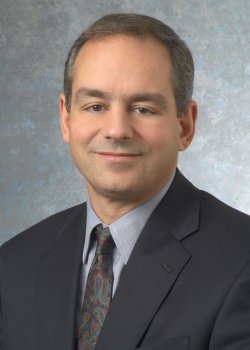
Case Coulter Translational Research Partnership awards $1.1 million in funding and support for promising biomedical engineering university technologies

The Case-Coulter Translational Research Partnership has announced more than $1.1 million in funding and other support for six biomedical technologies out of Case Western Reserve University.
The six projects were selected for full program funding, which ranges from $50,000 to $200,000 each. Several additional pilot projects have been or will be awarded funding by the end of the year. All projects are partnerships between a clinician and a biomedical engineer, and are focused on solving areas of unmet health care needs.
The 14-year-old program—a collaboration between Case Western Reserve University and the Wallace H. Coulter Foundation—provides direct funding and support services to help campus research teams advance products from their laboratories to the marketplace, where they can improve patient care.
Funding supports steps involved in preparing projects for potential commercialization, such as demonstrating technical feasibility, analyzing the business opportunity and assessing market feasibility. Projects must have the potential to advance to a commercial entity within 12 to 30 months.
More than two-dozen companies have emerged from the partnership’s support, and licensing arrangements have enabled three-dozen technologies to reach patients. For each dollar the partnership has invested, the projects have garnered an additional $25 of investment.
“The Case-Coulter Translational Research Partnership continues to be a cornerstone, filling an essential gap to transition university biomedical technologies from research to products, where they can significantly improve the health of our society,” said Robert Kirsch, the Allen H. and Constance T. Ford Professor and chair of the university’s Department of Biomedical Engineering.
“As a group, the quality of the evaluated technologies continues to improve each year, demonstrating the robustness of the biomedical research-based technology pipeline,” said Stephen Fening, CCTRP director. “We had many more proposals that were deserving of inclusion into the program than we were able to accommodate, making the selection process more challenging than ever.”
The six projects selected and their inventors are:
10-liter Scale Production of BG34-200 Immunotherapeutic Under cGMP Guidelines
Mei Zhang, assistant professor of biomedical engineering, and Alex Huang, professor of pediatrics and pathology.
A significant portion of patients with solid tumor cancers do not respond to immunotherapies due to a lack of T-cell-inflamed tumor microenvironment. This novel plant-derived non-toxic BG34-200 molecule can be intravenously injected to modulate macrophages and create a tumor microenvironment that is vital for the generation of antitumor T-cell responses. The team is launching a clinical trial targeting canine metastatic osteosarcoma to collect key and gap data in preparation for a first human clinical trial targeting pediatric osteosarcoma.
Drug-Free Targeted Prostate Cancer Treatment with TNT – Targeted Nanobubble Therapy
Agata Exner, professor of radiology and biomedical engineering, Jim Basilion, professor of radiology and biomedical engineering, and Lee Ponsky, professor of urology
Drug-free, low-toxicity prostate cancer treatment using nanobubbles (NBs) are targeted to the prostate specific membrane antigen (PSMA) biomarker overexpressed on prostate tumor cells. The nanobubbles are injected into the bloodstream and specifically seek out only the cancer cells. Once inside the target cell, the NBs remain trapped and can be excited with an ultrasound pulse. Exposure to ultrasound results in collapse of the bubbles, leading to a highly focused mechanical disruption of the cancer cells and cell death. The approach, which the researchers call TNT (targeted nanobubble therapy) can fit into the existing clinical work-flow and can be carried out with standard clinical ultrasound equipment. TNT can treat tumors without severe side effects, as it will be effective only when NBs are sonicated and will destroy only the cancer cells and not the surrounding healthy cells.
TraumaChek: A Field-deployable Dielectric Coagulometer for Comprehensive Assessment of Trauma-induced Coagulopathy
Anirban Sen Gupta, professor of biomedical engineering, Pedram Mohseni, professor of electrical engineering and biomedical engineering, and Sanjay Ahuja, professor of pediatrics
TraumaChek is a multichannel, handheld blood-coagulation analyzer for early, rapid and comprehensive assessment of trauma-induced coagulopathy. It is designed to guide hemorrhage control, transfusion and resuscitative management of trauma at the point-of-injury by first responders and at the point-of-care by hospital clinicians.
Minimally Invasive Interfascicular Nerve Stimulation (MiiNS) System for Chronic Pain Management
Dustin Tyler, the Kent H. Smith Professor of Biomedical Engineering, Emily Graczyk, research assistant professor of biomedical engineering, and Jennifer Sweet, professor of neurological surgery
This is a drug-free technology to provide targeted, comfortable, worry-free relief to people suffering from long-term pain. The discomfort and emotional stress from pain affects a person’s activity, sleep and ability to live a healthy life, leading to other serious health problems. Their Minimally Invasive Interfascicular Nerve Stimulation (MiiNS) technology provides a targeted, personally customized and comfortable treatment without side effects, addiction or surgical procedures. MiiNS can be implanted by a doctor during a simple office visit to provide long-lasting pain relief.
BAFF CAR-NK Cells for Therapy of B Cell Malignancies
Reshmi Parameswaran, assistant professor of medicine, and Pallavi Tiwari, assistant professor of biomedical engineering
BAFF CAR-NK cells can specifically kill B cell cancers in a very effective manner with minimum side effects. This is a potential curative therapeutic strategy for patients who are not responding to current treatment methods.
PhotoSorb: Safe and Long-lasting Sunscreen
Vijay Krishna, assistant staff in Cleveland Clinic’s Department of Biomedical Engineering, and Edward Maytin, staff in Cleveland Clinic’s Department of Dermatology
Every year, more than a million new cases of skin cancer, including melanoma, are diagnosed in the United States. The primary cause is exposure to ultraviolet radiation (UV) from sunlight. Sunscreens can block UV, but increasing concerns about the health and environmental risks of chemical sunscreens now on the market underscores an urgent need for safer, more effective alternatives. A team from biomedical engineering and dermatology at Cleveland Clinic is developing a novel sunscreen (PhotoSorb) that appears to be safer and more stable than current sunscreens, and also has the potential to actually prevent skin cancers.
For more information, contact Bill Lubinger at william.lubinger@case.edu.
(From The Daily, 12/14/2020)





